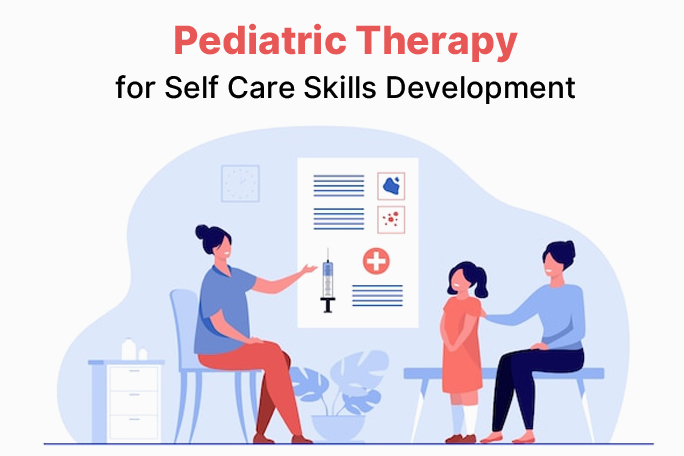

Physiotherapy is a type of healthcare that aims to improve physical function, reduce pain and discomfort, and promote overall health and well-being. It involves a range of techniques, exercises, and treatments that are tailored to the patient’s specific needs and goals. Recently, to make it more seamless, physiotherapy practice management software is being used. This […]
Physiotherapy is a type of healthcare that aims to improve physical function, reduce pain and discomfort, and promote overall health and well-being. It involves a range of techniques, exercises, and treatments that are tailored to the patient’s specific needs and goals.
Recently, to make it more seamless, physiotherapy practice management software is being used. This will impart the therapy to patients more easily.
In this comprehensive guide to physiotherapy, we will cover everything you need to know about the process, from injury to recovery.
The first step in the physiotherapy process is the initial assessment. During this appointment, the physiotherapist will ask the patient about their symptoms, medical history, and any relevant lifestyle factors. They will then perform a physical examination to assess the patient’s range of motion, strength, flexibility, and any areas of pain or discomfort.
Based on this assessment, the physiotherapist will develop a treatment plan tailored to the patient’s specific needs and goals. This may include a combination of exercises, manual therapy, and other treatments, such as ultrasound or electrotherapy.
Exercises are a key part of physiotherapy, as they can help to improve strength, flexibility, and range of motion, as well as reduce pain and discomfort. The specific exercises
prescribed will depend on the patient’s condition and goals, but may include:
Stretching: This can help to improve flexibility and range of motion, as well as reduce muscle tension and stiffness.
Strengthening: It will help in building muscle strength and improve overall function after injuries or surgery.
Aerobic exercise: This is done to improve cardiovascular health and overall fitness and may be particularly beneficial for patients with respiratory or cardiovascular conditions.
Balance and coordination exercises: The patient will be able to improve balance and reduce the risk of falls, particularly in elderly patients.
Manual therapy involves the use of hands-on techniques to manipulate the body’s soft tissues, such as muscles, ligaments, and tendons. It can be used to reduce pain, improve range of motion, and promote healing. Some common types of manual therapy include:
Massage: The use of hands or a massage tool to apply pressure to the body’s soft tissues. It can help to reduce muscle tension, improve circulation, and promote relaxation.
Joint mobilization: This involves using gentle movements to manipulate the joints, improve the range of motion and reduce pain.
Myofascial release: Putting sustained pressure on the body’s soft tissues to release tension and improve mobility.
Trigger point therapy: This technique uses pressure on specific areas of muscle tissue to relieve pain and promote healing.
Apart from exercises and manual therapy, physiotherapy also includes other treatments, depending on the patient’s condition and goals. Some common treatments include:
Ultrasound therapy: It includes the use of high-frequency sound waves to promote healing and reduce pain and inflammation.
Electrotherapy: This involves the use of electrical impulses to stimulate the muscles and promote healing.
Heat or ice therapy: Using heat or cold to reduce pain and inflammation and promote healing.
Taping or bracing: This involves the use of tape or a brace to support the injured area and reduce the risk of further injury.
Education: Physiotherapists can provide patients with advice and guidance on how to manage their condition, prevent future injuries, and improve their overall health and well-being.
The length of the physiotherapy process will depend on the patient’s condition and goals. Some patients may only require a few sessions, while others may need ongoing treatment over a longer period.
The goal of physiotherapy is to help the patient achieve their desired level of function and independence. Some common types of physiotherapy include:
Musculoskeletal physiotherapy:
This type of physiotherapy is often used for patients who have injuries or conditions affecting their muscles, bones, or joints.
Treatment may include exercises to improve strength and mobility, manual therapy to reduce pain and improve range of motion, and other techniques such as heat or cold therapy.
Neurological physiotherapy:
Patients who have suffered a neurological injury or condition such as stroke, Parkinson’s disease, or spinal cord injury may benefit from this type of physiotherapy. Treatment may involve exercises to improve balance, coordination, and motor function, as well as techniques to address issues such as muscle spasticity.
Also, there are specific types of physiotherapy, patients may also benefit from other complementary therapies such as acupuncture, massage therapy, or hydrotherapy.
It’s important to note that physiotherapy is just one part of a comprehensive recovery plan. Patients should also be under the care of a healthcare provider who can monitor their progress and adjust their treatment plan as needed.
Physiotherapy through physiotherapy practice management software is the best way to deal with the pain that you may be experiencing. Some of the most common kinds of physiotherapy treatments include strengthening and stretching exercises or massages that are designed to improve posture and mobility.
Physiotherapy is a specialised exercise program that focuses on improving function after injury or surgery.
Receive updates, business advice, and easy-to-follow tips in your inbox with just a tap.
Does your Physio therapy business needs a boost? Access the ready to implement ideas & strategies.